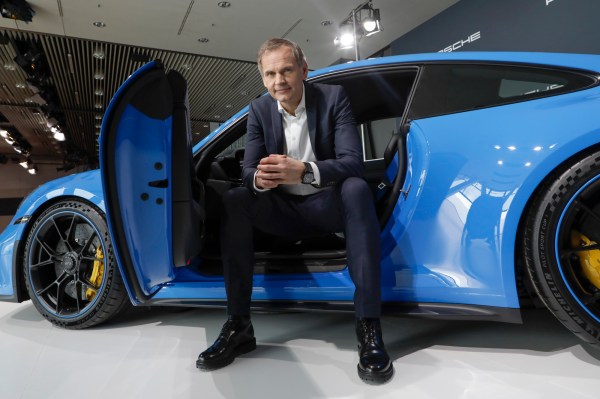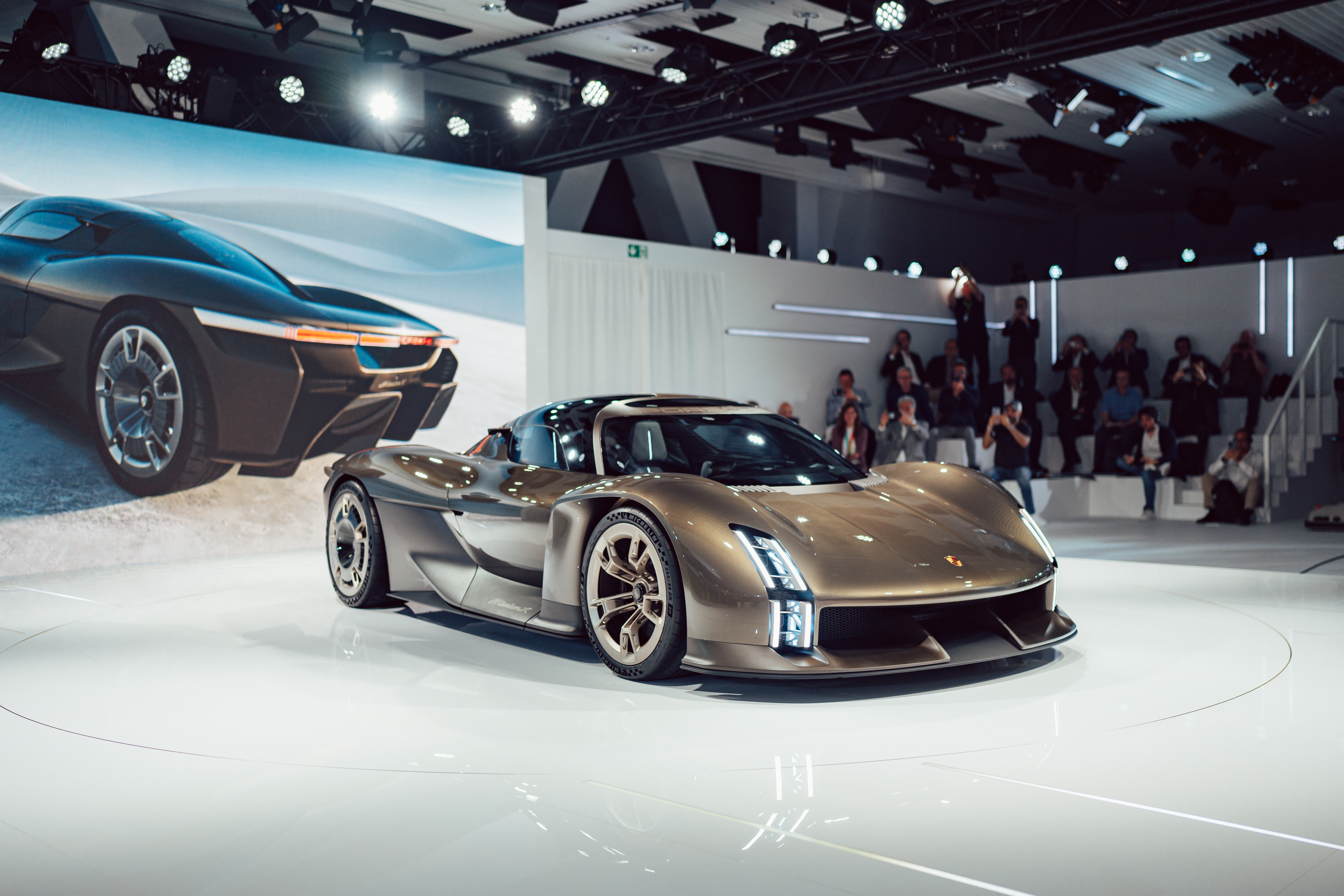Porsche — with CEO Oliver Blume behind the wheel — has zipped by a number of milestones over the past several years. Its share price has gained more than 36% since its IPO in September 2022 and profit margins are at an enviable 18%.
And yet, Blume isn’t satisfied.
“We are driving the company like a sports team,” Blume said earlier this month on the sidelines of the company’s 75th anniversary celebration. “After a success, focusing [on] what we can do more… going for the next goal.”
The next goal, Blume said, is 20% margins. The road to get there will be paved with investments in new segments and maybe even a seven-figure hypercar.
Timing is everything
The last nine months haven’t been kind to other automakers that went public in the past few years, particularly companies like Canoo, Fisker, Lucid Motors and Polestar that merged with special purpose acquisition companies. Even Rivian, the 2021 IPO darling that debuted at $78 a share, has seen its price fall some 82%.
Porsche has managed to avoid a similar fate — a result that Blume credited to years of preparation.
“It was a process over years, where we developed the company,” Blume said. “Five years ago, Porsche would never have been able to go to the stock market, and now it was the right moment.”
That preparation required a renewed focus on the fundamentals: margins, profits and cash flow. But, don’t think all that has made the company boring. At Porsche’s 75th birthday party in Stuttgart, Blume unveiled the Mission X, a hypercar designed to be the fastest production car ever made, not the most profitable.
Pushing into the luxury segment
When it comes to growing profit margins, it’s hard to do better than the luxury segment.
Though Porsche is certainly a premium manufacturer, its reputation has been built on performance, not poshness. A pivot to challenge brands like Mercedes-Benz or Rolls-Royce is not to be made lightly.
“Before we decide to go to a new segment, we make a deep analysis of the markets, of the profit pools and different regions of the world, and we think the segment of luxurious SUVs is quite huge, and with a very strong development potential from the future, and strong profit margins. What’s missing is a very sporty one there,” Blume said.
In other words: Buyers have many luxurious and stylish options in the premium SUV segment, but none of them has the character of a Porsche.
Learning from the Cayenne
It’s a similar story to what drove Porsche to introduce the Cayenne SUV 20 years ago. Though not particularly luxurious, the tall, big and wide Cayenne was a massive departure from the company’s pure sports offerings.
Cayenne sparked controversy, with many brand purists saying that Porsche had lost its way. Far from the beginning of the end, Cayenne is now Porsche’s biggest seller, while the company’s portfolio of fast, desirable sports cars is broader than ever.
By heading to green pastures, Porsche found huge success, and now Blume hopes to do so again.
That next expansion is a new SUV that Blume referred to by its code name: K1. This new SUV, first mentioned in March and due by 2027, will be bigger than Cayenne. It’ll be quick, too, but the focus here is on luxury.
Performance will come from a fully electric powertrain, Blume said, in keeping with Porsche’s goal of delivering 80% EVs by 2030. However, the look and layout of the car might be a little unfamiliar. “You will be surprised by the design,” Blume said.
Blume also said that the K1’s systems and software, the car’s “technology profile,” will be unique.
Wanted: Software engineers
To create innovative technologies found only in Porsches, the company is on a hiring spree — a notable difference from an industry that is laying off workers.
Porsche has more than 1,000 technical positions open, including many on the software side. Blume said that this is an increasingly core part of the company’s identity: “We think that the IP we are developing is very specific,” Blume said. “100% portion of this kind of costs are important for our brand identity and for our product identities. Therefore, that is our core business.”
For Blume, this clarifies the build versus buy debate.
“You can buy solutions in the market in areas, which are not your core business… And so for us it is very clear where to tap into that focus, where we will get the best talent from the market to develop our core competencies,” he said. “And in other areas, where it is not so important… we will work together with partners, but they are the best partners in the market.”
When it comes to that core experience, Blume said: “All the touch and feel and coming up to the software experience into the car should be unique for Porsche.”
Bringing a luxury all-electric SUV — catnip for American buyers — might make sound financial sense. However, for extremely low-volume hypercars (Porsche sold just 918 of the 918 Spyder), the value proposition is often a bit more nebulous.
Blume cited the brand-building impact of a record-setting halo car like the Mission X: “All our hypercars are icons,” he said. But, there are some more tangible benefits, too. “In the hypercars, we show the best the company is able to develop, to produce, to show what our technologies [are] for the future. We will later bring [them] to other serial cars, and so, it’s not only a showcase, it’s real life, to bring innovations, to develop innovations,” he said. “The whole team is focused, motivated, pushed to develop a hypercar, and that is the best the company is able to deliver.”
Mission X: To be or not to be?
Blume declined repeatedly to indicate whether or not the Mission X would be produced, but we shouldn’t have to wait long to find out.
He said the decision will be made “during the next month.” Should it get the green light, its first official duty will be recapturing the fastest production car lap record around the Nurburgring Nordschleife. For Blume, that iconic, 13-mile race track cut through the forests of western Germany is part of Porsche’s DNA: “When we design and build the concept of a car, the Nurburgring Nordschleife is the measure for Porsche.”
Porsche’s last hypercar, 2013’s 918 Spyder, itself set the fastest lap time for a production car, with a time of 6:57. The current record, set by the $2.7 million Mercedes-AMG One, sits at 6:35. That will likely be the target for the Mission X, the existential goal for a car built by a nearly octogenarian company still intent on proving its mettle on the track.

